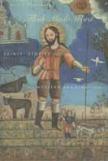An Alternative Theology
Aviad Kleinberg, a professor of history at Tel Aviv University, belongs to that not inconsiderable number of contemporary historians who have taken seriously the cult of the saints in the history of Christianity. That interest in the saints has been especially energized by Peter Brown’s The Cult of the Saints, published nearly three decades ago, as well as subsequent studies by Brown and those influenced by him. Historical research on the saints, of course, goes back at least as far as the pioneering work of the Jesuit Jean Bolland (d. 1665), whose research center exists to this day in Brussels. As Kleinberg’s ample notes testify, historical research on the saints is a growth industry.
Flesh Made Word follows two trajectories. The first comprises a series of chapters on the rise of the cult of the saints from the matrix of, first, the martyrs and then their successors. Sub-sequent chapters treat the ascetics, followed by a rather quick leap to the Middle Ages, where Kleinberg finds a new shift in the construction of hagiographies from roughly the 12th century on. He ends his historical trajectory with a fine chapter on that most popular of medieval books: The Golden Legend, compiled by the industrious Dominican bishop James of Voragine (d. 1298). Kleinberg alternates more general considerations on a given topic with detailed examinations on a given saint. Thus, for example, a chapter on martyrdom is followed by one on the Passion of Perpetua and Felicity and another on ascetics with a subsequent one on Athanasius’ Life of Antony and the contrasting (and fictive) Life of Paul by the redoubtable Jerome.
Later he contrasts the development of the legend of St. Francis of Assisi with a late story of Fra Ginepro (Juniper) from the Fioretti. That work, often praised for its simplicity, is, in fact, a highly polemical collection reflecting the thinking of the more conservative contemplative friars from the Italian Marches.
One of the more interesting aspects of this book is Kleinberg’s occasional reference to the Jewish tradition about martyrs. I wish he had made more of this theme, since most historical studies very rarely turn to that tradition beyond the well-known observation that the account of the Maccabean martyrs may have served as a literary model for early martyrdom passiones in the Christian tradition. How interesting it would have been had he used, as a model, some features of Hasidism (e.g., the Bratislavers), with its emphasis on visiting the tombs of the rebbes, their miraculous interventions, and the like.
This first trajectory—investigating some early examples of hagiography—overlaps with another one, an argument drawn from the author’s historical narrative already described. That argument in its baldest form can be stated as follows: the hagiographical tradition reflected a popular religion of the masses in contrast to the high culture of the institutional church of the elites. Thus, Klein-berg makes a radical distinction between elite religion reflected in texts, creeds, liturgy and clerical life and the religion of the masses centered on the cult of the saints. His thesis is not very original; it was expressed in a polemical but unsystematic manner by Erasmus of Rotterdam in The Praise of Folly on the eve of the Reformation. In Kleinberg’s book, however, this separation between popular religion embedded in the cult of the saints at a polar distance from the religion of the elites is a recurring leitmotif. In his concluding reflections Kleinberg insists that this separation is radical and broad.
What are we to make of this thesis?
That Catholicism has a tradition of popular religion is not only well known but has for more than a generation been given a sympathetic reading, mostly by liberation theologians. Also, there has always been in the Catholic tradition a link between popular and “official” religion in the cult of the saints through the liturgy with its interwoven temporal and sanctoral cycles. Finally, while it is true that the magisterial theological tradition reflected only incidentally on the meaning and significance of saints within theology as a whole, there is a theological reflection on the role of the saints that has a very long history, from the patristic period down to the present day. In fact, John Henry Newman wrestled with the problem of the cult of the saints in the development of Christian doctrine in his 1845 work on doctrinal development. That interest continues into our own times.
As noted at the outset, two threads weave through this work: the first, a study of hagiography in the patristic and medieval period; the second, an attempt to explain the cult of the saints. The first is interesting, well researched and generally reliable in its observations. The author’s treatment of the second, however, is overly simplistic and reductionist with none of the sophistication one finds, say, in the exemplary work of Peter Brown, Caroline Walker Bynum and other historians who have turned their scholarly attention to the complex world of hagiography. At times, to be sure, popular religion operated somewhat at a distance from the “official” faith tradition of the church, while at other times the two intersected even dramatically. After all, Ignatius of Loyola was converted by reading a Spanish version of The Golden Legend, but his subsequent history was hardly “popular” religion independent of the “official” faith of the elites.
This article also appeared in print, under the headline “An Alternative Theology,” in the September 22, 2008, issue.








